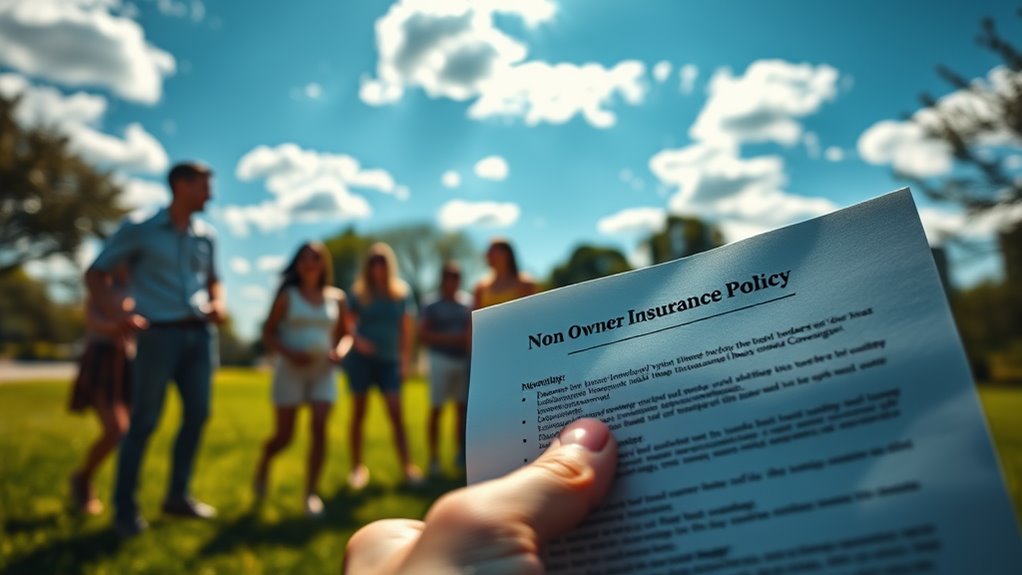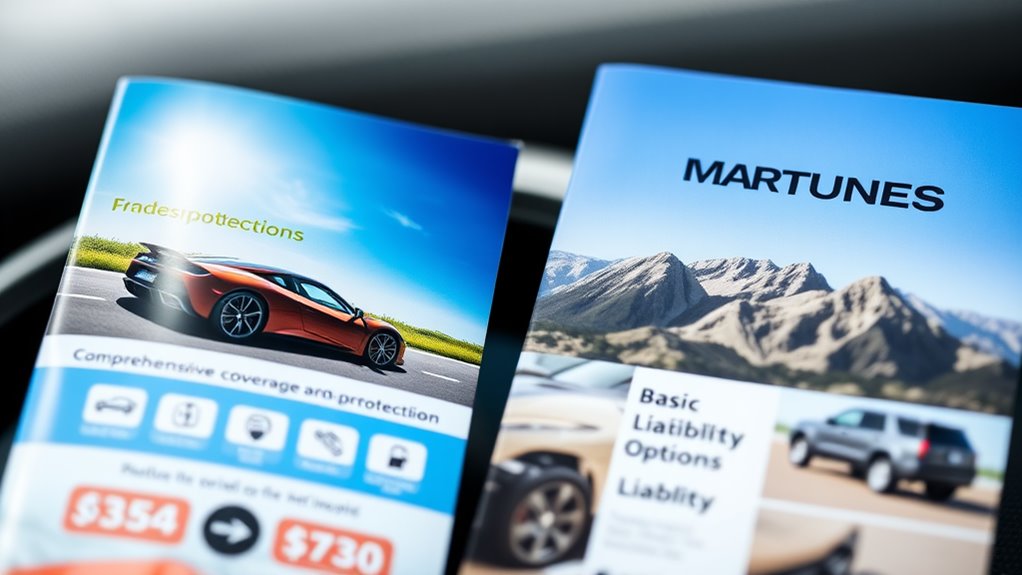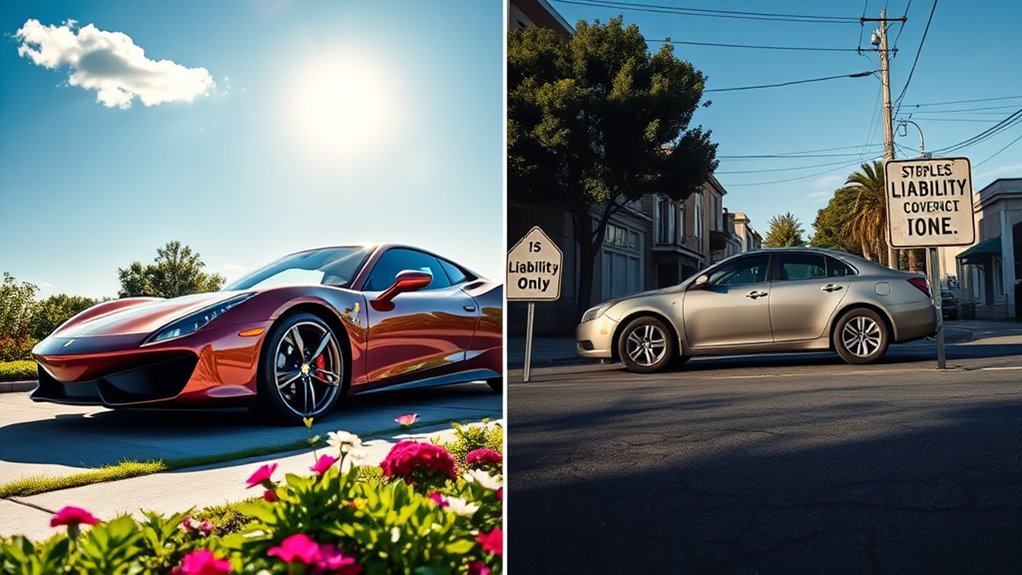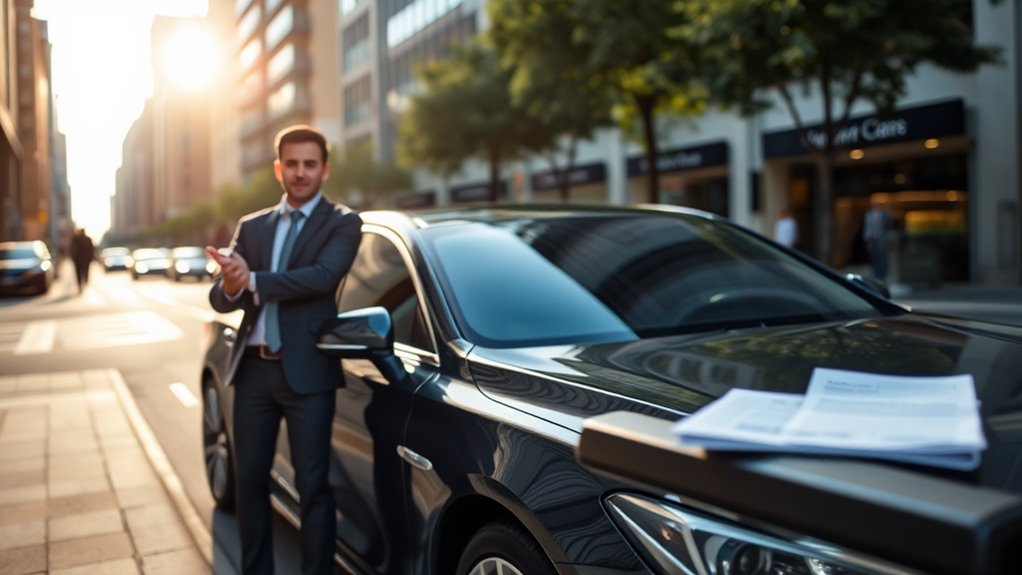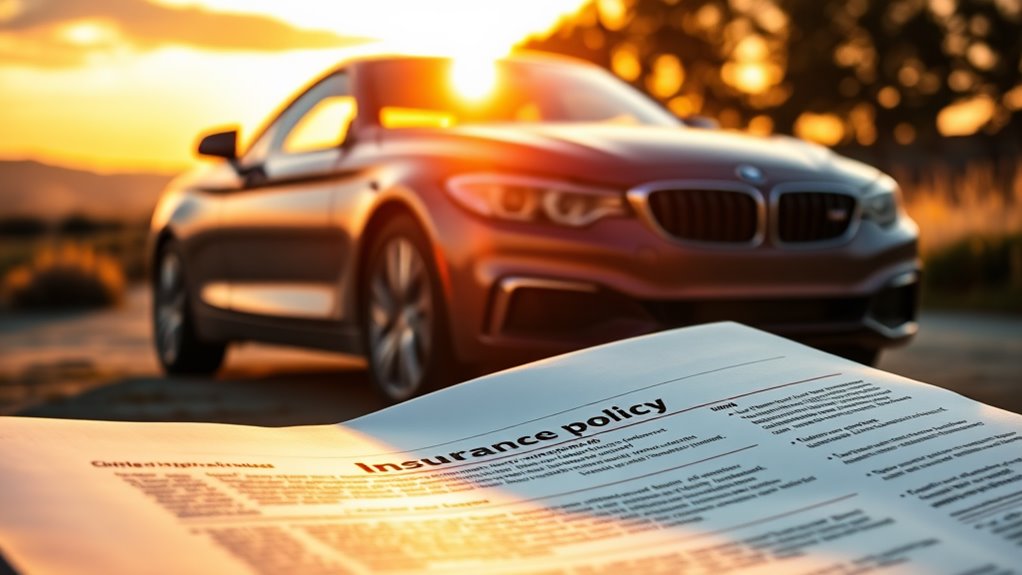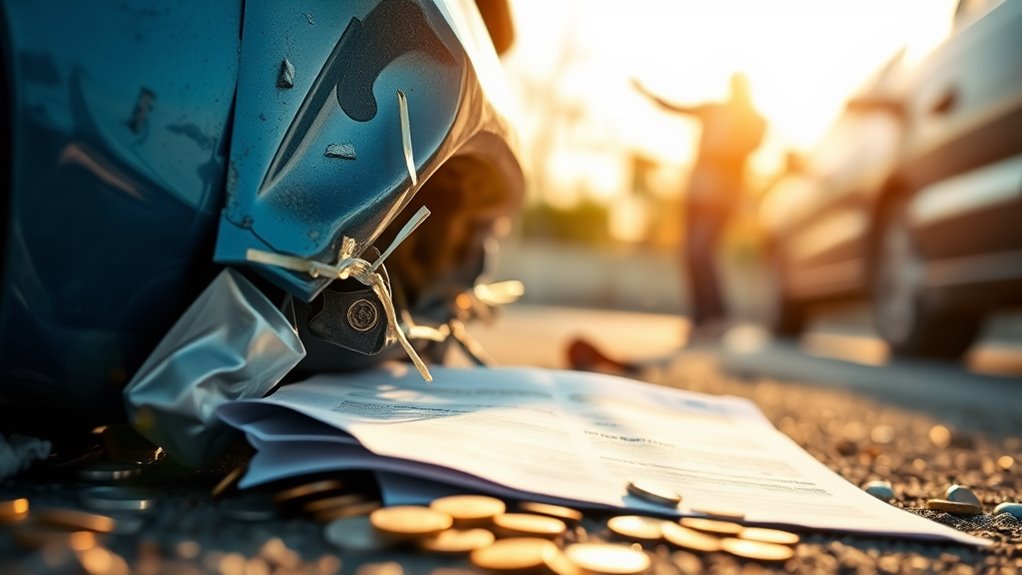In the domain of insurance, choosing the right coverage limits can feel like maneuvering through a complex labyrinth. For non-owner insurance, understanding the nuances of liability and additional coverage options is essential for financial security. You might think you know what you need, but are you aware of the recommended limits that can safeguard you against unforeseen events? Let's explore the critical aspects that will help you make informed decisions.
Key Takeaways
- Non-owner insurance typically includes Liability Coverage limits of at least $50,000 per person and $100,000 per accident for better financial protection.
- Consider adding Personal Injury Protection (PIP) for medical expenses, especially if you frequently borrow or rent vehicles.
- Uninsured/Underinsured Motorist Coverage is essential to guard against accidents with drivers lacking adequate insurance.
- Higher limits are recommended in urban areas due to increased traffic and accident rates, reflecting a greater risk exposure.
- Evaluate your driving frequency and vehicle safety features to adjust coverage limits appropriately for your specific needs.
Understanding Liability Coverage Limits
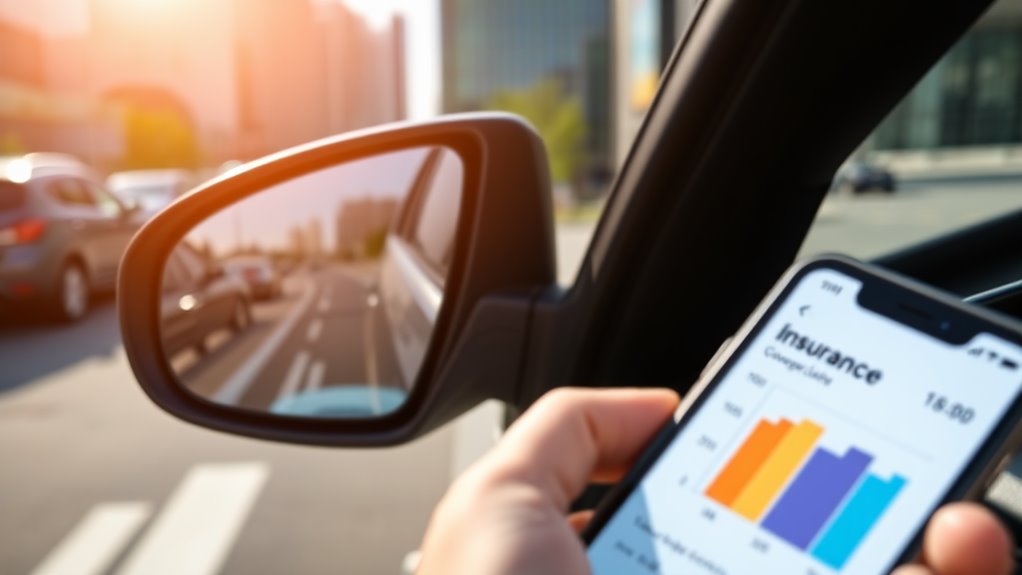
When it comes to understanding liability coverage limits, it's crucial to recognize their role in protecting you from legal liabilities that arise from accidents where you're at fault. Liability coverage typically includes Bodily Injury (BI) and Property Damage (PD) coverage, which safeguard you against costs incurred from injuries or damages you cause to others. These limits are often expressed in a format like $50,000/$100,000/$30,000, indicating per-person bodily injury, total bodily injury per accident, and property damage coverage, respectively. Higher coverage limits generally offer better protection but come with increased premiums. Additionally, it's important to note that non-owner auto insurance is designed for individuals who frequently drive but do not own a vehicle, making it a valuable option for many drivers. Understanding liability coverage limits can ensure you make informed decisions about your policy. Evaluating your needs based on personal assets and driving habits will help you choose appropriate limits, ensuring you're adequately protected against potential financial repercussions.
Minimum Coverage Requirements by State
While minimum coverage requirements can vary considerably from state to state, understanding these regulations is vital for compliance and financial protection. Most states mandate liability insurance, with specific limits for bodily injury and property damage.
Additionally, some states require supplemental coverages like Personal Injury Protection (PIP) or Uninsured/Underinsured Motorist (UM/UIM) coverage. In certain instances, states allow alternative options, such as bonds or deposits, to meet financial responsibility requirements.
Significantly, New Hampshire stands out as it doesn't mandate car insurance but may impose conditions under which coverage is necessary.
It's essential to familiarize yourself with your state's specific requirements to guarantee you meet legal obligations and avoid potential penalties.
Recommended Bodily Injury Liability Limits
Experts recommend that you consider higher bodily injury liability limits than your state's minimum requirements to guarantee adequate financial protection.
While minimums often start around $25,000 per person, industry standards suggest aiming for at least $50,000 per person and $100,000 per accident.
Here are key reasons to opt for higher limits:
- Financial Protection: Safeguard your assets in the event of severe injuries.
- Risk Management: Reduce personal financial liability in costly accidents.
- Driving Frequency: Even infrequent drivers face potential high-risk situations.
- Cost vs. Coverage: Increased premiums are often justified by enhanced protection.
Property Damage Liability Coverage Explained
Bodily injury liability limits provide essential protection for personal assets, yet understanding property damage liability coverage is equally important for thorough insurance security.
This coverage pays for repairs or replacement of another person's property when you're at fault, including vehicles, buildings, and other structures. In most states, it's a legal requirement, with minimum limits ranging from $5,000 to $25,000.
If damages exceed your policy limits, you'll be responsible for the excess amount. The claims process allows the affected party to file with your insurer, potentially covering legal fees if court action arises.
Opting for higher limits often comes with minimal premium increases, enhancing your asset protection and ensuring you're adequately covered in case of accidents.
Uninsured/Underinsured Motorist Coverage Options
Uninsured and underinsured motorist coverage options play an essential role in safeguarding your financial well-being on the road. This coverage protects you when accidents involve drivers who lack adequate insurance.
Here's what you need to know:
- Types of Coverage: It includes both bodily injury and property damage components.
- State Variations: The requirements and availability differ by state, with over half mandating some form of this coverage.
- Hit-and-Run Protection: It often covers you in hit-and-run scenarios, ensuring you're not left financially vulnerable.
- Cost Variability: Premiums may fluctuate based on the percentage of uninsured drivers in your area, impacting your overall insurance costs.
Choosing the right limits is critical for thorough protection against unforeseen incidents.
Personal Injury Protection and Medical Payments
When driving, having the right coverage can make all the difference in ensuring your financial security after an accident. Personal Injury Protection (PIP) pays for medical expenses, regardless of fault, but it isn't included in all non-owner policies.
Instead, many opt for Medical Payments coverage, which is an alternative commonly found in these policies. This coverage helps with medical expenses for you and any passengers, regardless of who caused the accident.
While it's optional, it offers essential financial protection by covering gaps in health insurance. Keep in mind that policy limits may be lower than extensive coverage options, so tailor your coverage to your needs, considering factors like driving frequency and geographic location for ideal protection.
The Importance of Comprehensive and Collision Coverage
While many drivers understand the basics of liability insurance, the significance of extensive and collision coverage often gets overlooked. These coverages play an essential role in protecting your vehicle from various damages.
Here are key reasons to take into account:
- Protection from Non-Collision Hazards: Extensive coverage safeguards against theft, vandalism, and weather-related damage.
- Accident Protection: Collision insurance covers damages from accidents involving other vehicles or objects.
- Financial Security: Both coverages help secure your investment, especially for financed or leased vehicles.
- Peace of Mind: They provide reassurance in unforeseen circumstances, ensuring your vehicle's value and usability remain intact.
Understanding these aspects can help you make informed decisions when it comes to auto insurance coverage.
Factors Influencing Coverage Limit Choices
Choosing the right coverage limits for non-owner insurance involves several key factors that can greatly affect your overall protection and costs.
State laws set minimum liability coverage, which you must adhere to. Your financial situation also plays a crucial role; higher limits increase premiums, so balance your budget wisely.
State laws dictate minimum liability coverage, so consider your finances carefully when choosing higher limits.
Consider how often you drive borrowed or rented vehicles, as this impacts your coverage needs. The type of vehicle, whether personal, rental, or company cars, can also influence your choices.
Additionally, your geographical location matters—urban areas often have higher premiums due to increased accident rates.
Understanding these factors will help you select appropriate coverage limits that align with your needs and financial capabilities.
Supplementary Coverage Options for Non-Owners
Supplementary coverage options for non-owner insurance can greatly enhance your protection and fill gaps that standard policies may leave.
Consider these options to strengthen your coverage:
- Liability Coverage: Guarantees you meet legal requirements for injuries and property damage.
- PIP (Personal Injury Protection): Covers medical expenses for you and passengers, though availability varies by state.
- Uninsured/Underinsured Motorist Coverage: Protects you from costs if you're involved in an accident with drivers lacking sufficient insurance.
- Rental Car Liability: Offers cost-effective coverage when driving rental vehicles, often more affordable than rental company options.
Assessing Your Driving Habits for Ideal Coverage Limits
How can you determine the ideal coverage limits for your non-owner insurance? Start by evaluating your driving frequency. If you often borrow cars for your daily commute or frequently rent vehicles, you'll need higher coverage.
Consider your location—urban areas with heavy traffic or high crime may increase risk. Examine the types of vehicles you drive; newer models with advanced safety features may require less coverage than older, less safe cars.
Assess your environment and vehicle safety features to determine appropriate non-owner insurance coverage.
Analyze local accident statistics; if your area has high rates of uninsured drivers or frequent accidents, you'll want to raise your limits. Finally, be aware of legal implications; insufficient coverage can lead to costly legal fees and higher future premiums.
Adjust based on these factors for optimal protection.
Conclusion
To summarize, selecting the right coverage limits for non-owner insurance is akin to building a safety net woven from threads of foresight and prudence. By understanding your unique driving habits and the landscape of potential risks, you can tailor your coverage to shield against unforeseen liabilities. Embracing recommended limits, alongside supplementary options, guarantees you navigate the roads with confidence, transforming uncertainty into a fortress of financial security that stands firm against the unexpected.
